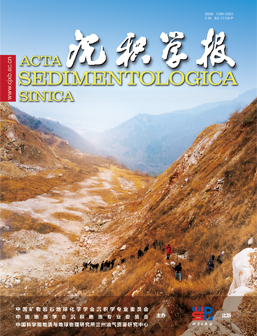Study on the Genesis of the Magong Manganese Deposit on the Northwestern Margin of the Yangtze Platform
doi: 10.14027/j.issn.1000-0550.2025.047
- Received Date: 2025-06-05
- Available Online: 2025-11-18
-
Key words:
- Magong Manganese deposit /
- early Cambrian /
- source of ore-forming minerals /
- sedimentary environment /
- Mn precipitation mechanism
Abstract: [Objective] The Early Cambrian Longmenshan tectonic belt hosts a series of sedimentary manganese deposits; however, their material sources, sedimentary environment, and precipitation mechanisms remain controversial. This study takes the Magong manganese deposit as an example, aiming to provide an in-depth discussion on the metallogenic model and precipitation mechanisms of this ore district, thereby offering a theoretical basis for research on sedimentary manganese deposits within this tectonic belt. [Methods] Electron microscopy and electron probe microanalysis were employed to analyze the characteristics of mineral assemblages and the particle size distribution of framboidal pyrite. Inductively coupled plasma optical emission spectrometry (ICP-OES) and inductively coupled plasma mass spectrometry (ICP-MS) were used to determine the whole-rock major and trace element contents. Based on these analyses, the material sources, sedimentary environment, manganese precipitation mechanisms, and metallogenic processes of the Early Cambrian Magong manganese deposit on the northern margin of the Longmenshan tectonic belt were systematically investigated. [Result] Petrographic and mineralogical studies reveal that the manganese carbonate ore layers, pyrite layers, and siliceous rocks in the Magong manganese deposit are rhythmically interbedded. The primary manganese-bearing minerals include kutnohorite with microbial textures and alabandite, followed by psilomelane and pyrolusite. The gangue minerals consist of framboidal pyrite, organic matter, quartz, and dolomite. Major and trace element analyses show no significant positive correlation between MnO and Al2O3. Samples fall into the hydrothermal end-member in discrimination diagrams such as SiO2-Al2O3, (Co+Cu+Ni)×10-Fe-Mn, and (Zr+Y+Ce)×100-(Cu+Ni)×15-(Fe+Mn)/4. Most samples exhibit Fe/Ti>20 and Al/(Al+Fe+Mn)<0.35, further indicating that the ore-forming materials were primarily derived from submarine hydrothermal activity. Enriched EFU and EFMo values, along with EFMo/EFU>1, suggest a weakly restricted to restricted paleo-hydrodynamic environment. The stringent conditions required for the formation of alabandite, the presence of synsedimentary framboidal pyrite (<6 μm), and multiple geochemical indicators (such as V/Mo-Mo, V/Cr, Ni/Co, and V/(V+Ni)) collectively reflect that the Magong Manganese Deposit was formed in a relatively dynamic dysoxic-suboxic-euxinic environment. Euhedral to subhedral organic matter and extremely high EFMo, EFP, and EFCd values indicate high paleoproductivity conditions. [Conclusion] The geochemical characteristics suggest that the ore-forming materials of the Magong manganese deposit were mainly derived from submarine hydrothermal activity. The manganese carbonate ores were enriched in a relatively dynamic shelf-slope environment under dysoxic-suboxic-euxinic conditions. High paleoproductivity provided the material basis for the mineralization through water column stratification under the "sulfide wedge" model. The presence of microbial-textured kutnohorite, abundant organic matter, and framboidal pyrite indicates that the manganese precipitation process was significantly influenced by bacterial sulfate reduction (BSR) and extracellular polymeric substances (EPS): the BSR process provided HCO3- for the formation of manganese carbonates and H?S for the generation of pyrite and alabandite; the EPS secreted by bacteria provided adsorption sites for Mn2+, Mg2+, and Ca2+, promoting the precipitation of kutnohorite. During the mineralization process, iron and manganese were separated due to differences in their geochemical behaviors. This study provides new evidence for understanding the genesis of sedimentary manganese deposits in the Longmenshan tectonic belt and further refines the precipitation mechanism of sedimentary manganese ores within this metallogenic belt.
| Citation: | Study on the Genesis of the Magong Manganese Deposit on the Northwestern Margin of the Yangtze Platform[J]. Acta Sedimentologica Sinica. doi: 10.14027/j.issn.1000-0550.2025.047 |






 DownLoad:
DownLoad: